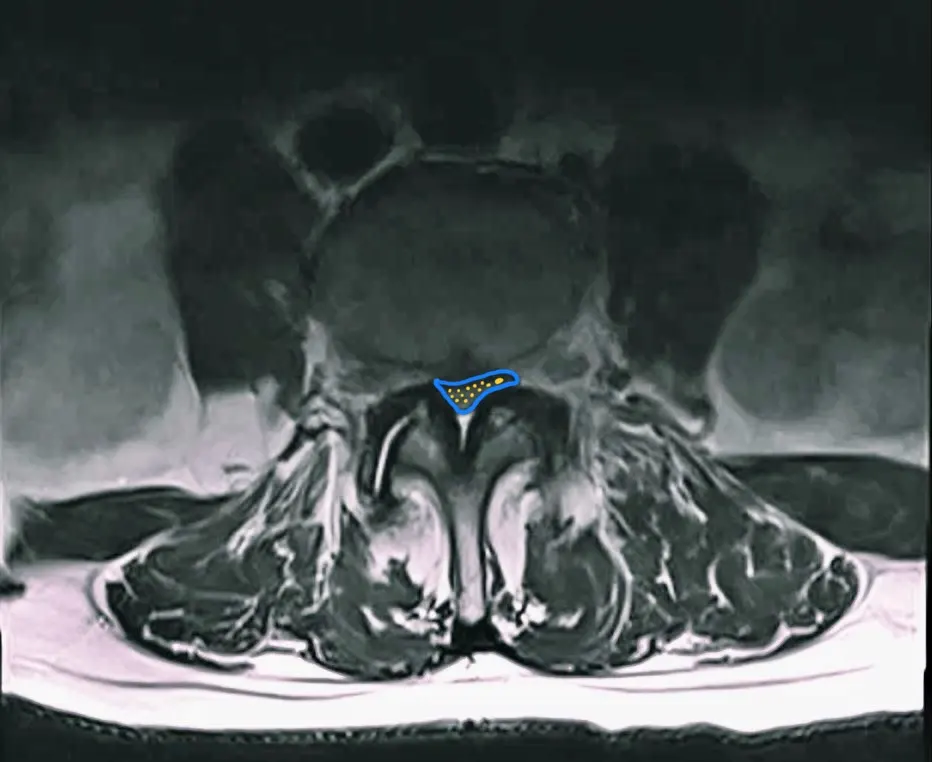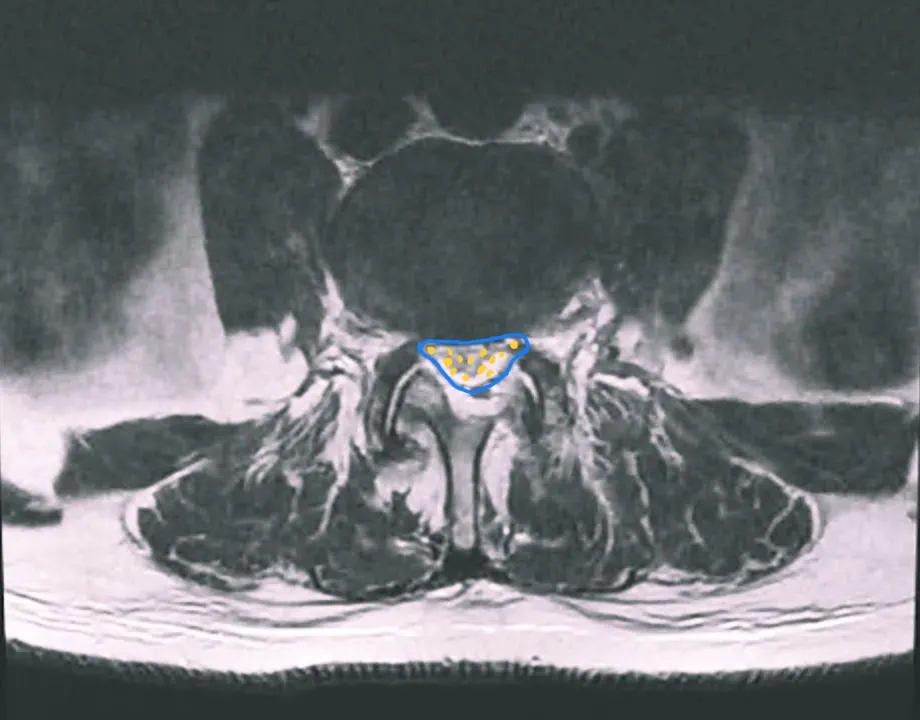Endoscopic Lumbar Decompression
Endoscopic lumbar stenosis decompression is another minimally invasive KEYHOLE procedure used to treat lumbar spinal stenosis, a condition where the spinal canal narrows, compressing the nerves. This narrowing can lead to symptoms like lower back pain, leg pain, numbness, or weakness.
In this procedure, the goal is to relieve the pressure on the (Motorway) spinal cord and nerves by removing bone spurs, ligaments, or discs that are contributing to the stenosis. It’s similar to an endoscopic discectomy in that it uses smaller incisions and an endoscope to visualise the area, but it focuses on decompression channel rather than just removing herniated disc material.
MRI scan of the lumbar spine showing bottleneck at the motorway (Read more) causing congestion and claudication leg pain.
Post Operative MRI scan following KEYHOLE Lumbar Surgery demonstrating clearance for the bottleneck and congestion.
Here’s how we do it:
- Small Keyhole Incision: A small stab incision of about a 1 cm is made under regional or general anaesthesia. This is performed under the xray it helps us guide to affected part of the spine.
- Endoscope Insertion: Similar to knee and shoulder keyhole surgery, an endoscope is used to visualise the spinal canal and surrounding structures under constant fluid irrigation. The images are transferred to specialised HD monitor during the operation which helps us to perform precision surgery.
- Decompression: The motorway is widened using specialised fine instruments and drills through the same single incision. The bony spurs, thickened ligaments, or other tissue causing the compression is removed under direct vision using a 4k camera.
- Recovery: Because it’s minimally invasive, recovery is usually quicker compared to traditional open surgery. We expect the patients to mobilise in an hour or so and become self-independent.
- Minimal Tissue Damage: Because the incision is so small, the surrounding muscles and tissues are minimally disturbed, leading to faster recovery times and less post-surgical pain.
Benefits:
- Smaller incisions and less muscle damage resulting in less post-operative pain.
- Faster recovery times compared to traditional open surgery.
- Reduced risk of infection and scarring.
Risks:
- As with any surgery, there’s a risk of infection, nerve injury, or complications related to anesthesia.
- In some cases, the disc herniation may recur, though this is less common precaution needs to be taken during rehabilitation to mitigate the risk.
As with other minimally invasive procedures, keyhole decompression is usually preferred for patients who have symptoms that haven’t improved with non-surgical treatments and their activity of daily living is affecting their quality of life.
Empower yourself with knowledge to make informed decisions regarding your health and well-being. For further guidance, assessment, and expert care, don’t hesitate to contact us today
Note: Medical conditions should always be discussed with a qualified healthcare professional. This content is for informational purposes only.




